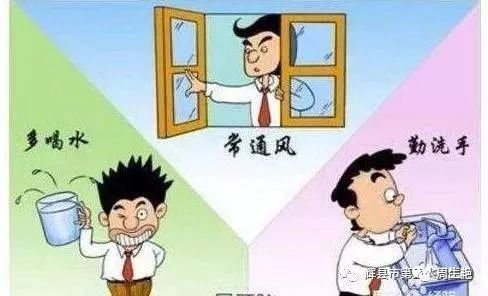The common cold is characterized by nasal congestion, runny nose, sneezing, headache, and fever, occurring in all seasons, with a higher prevalence in winter and spring. When the condition is mild, it is referred to as a “wind cold”; when severe, it is termed “severe wind cold” or “seasonal cold.” In Traditional Chinese Medicine (TCM), it can be differentiated into three types: wind-cold, wind-heat, and summer-damp.

What is Wind-Cold Type Common Cold
Patients with wind-cold type common cold exhibit general symptoms such as nasal congestion, sneezing, coughing, and headache, along with additional characteristics including aversion to cold, low fever, absence of sweating, body aches, clear runny nose, expectoration of thin white phlegm, sweating, sore and swollen throat, lack of thirst or preference for warm drinks, and a thin white tongue coating. They often feel more comfortable when wearing many layers or under a heavy blanket.
This type of cold is related to the patient’s exposure to wind and cold. Treatment should follow the principle of warming and dispersing the exterior.
Medications such as wind-cold common cold granules, common cold clearing granules, Jiu Wei Qiang Huo Wan (Nine Flavor Qiang Huo Pill), Tong Xuan Li Fei Wan (Tong Xuan Lung Regulating Pill), and Wu Shi Cha Granules (Noon Tea Granules) can be used for treatment. If the patient also has symptoms of internal heat and constipation, Fang Feng Tong Sheng Wan (Fang Feng Detoxifying Pill) may be administered.
Avoid using medications such as Sang Ju Gan Mao Pian (Mulberry and Chrysanthemum Cold Tablets), Yin Qiao Jie Du Pian (Yin Qiao Detoxifying Tablets), Ling Qiao Jie Du Pian (Ling Qiao Detoxifying Tablets), and Compound Cold Tablets.
Symptoms of Wind-Cold Type Common Cold
The common cold is characterized by nasal congestion, runny nose, sneezing, headache, and fever, occurring in all seasons, with a higher prevalence in winter and spring. When the condition is mild, it is referred to as a “wind cold”; when severe, it is termed “severe wind cold” or “seasonal cold.” In TCM, it can be differentiated into three types: wind-cold, wind-heat, and summer-damp.
What is Wind-Cold Type Common Cold
Patients with wind-cold type common cold exhibit general symptoms such as nasal congestion, sneezing, coughing, and headache, along with additional characteristics including aversion to cold, low fever, absence of sweating, body aches, clear runny nose, expectoration of thin white phlegm, sweating, sore and swollen throat, lack of thirst or preference for warm drinks, and a thin white tongue coating. They often feel more comfortable when wearing many layers or under a heavy blanket.
This type of cold is related to the patient’s exposure to wind and cold. Treatment should follow the principle of warming and dispersing the exterior.
Medications such as wind-cold common cold granules, common cold clearing granules, Jiu Wei Qiang Huo Wan (Nine Flavor Qiang Huo Pill), Tong Xuan Li Fei Wan (Tong Xuan Lung Regulating Pill), and Wu Shi Cha Granules (Noon Tea Granules) can be used for treatment. If the patient also has symptoms of internal heat and constipation, Fang Feng Tong Sheng Wan (Fang Feng Detoxifying Pill) may be administered.
Avoid using medications such as Sang Ju Gan Mao Pian (Mulberry and Chrysanthemum Cold Tablets), Yin Qiao Jie Du Pian (Yin Qiao Detoxifying Tablets), Ling Qiao Jie Du Pian (Ling Qiao Detoxifying Tablets), and Compound Cold Tablets.
Simple Remedies for Wind-Cold Type Common Cold
Wind-cold type common cold is characterized by severe aversion to cold, mild fever, absence of sweating, body aches, nasal congestion, clear runny nose, coughing, expectoration of thin white phlegm, and a thin white tongue coating. Mild cases of wind-cold common cold can sometimes be cured or alleviated using simple and easy methods.
Hair Dryer Therapy
After catching a wind-cold, use a hair dryer to blow warm air onto the Dazhui (大椎) point several times a day for 5 minutes each time. After sweating, the symptoms of the cold may lessen or disappear.
Gua Sha Therapy
Take 10 grams each of fresh ginger and scallion whites, chop and mix them, wrap in cloth, and dip in warm alcohol before scraping the forehead and temples, then scrape along both sides of the spine, and also the elbow and knee pits, to promote quicker recovery from the cold.
Moxibustion Therapy
For wind-cold type common cold, light a moxa stick and hold it about 2 centimeters away from the Fei Yu (肺俞) point and Dazhui (大椎) point, using a comfortable warmth as a guide, moxibustion for 5-10 minutes, twice daily, to dispel wind and cold.
Fumigation and Washing Therapy
Take 9 grams each of Jing Jie (荆芥), Fang Feng (防风), Du Huo (独活), Qiang Huo (羌活), and 12 grams each of Bai Zhi (白芷), Chai Hu (柴胡), and Qian Hu (前胡), decoct to make a wash for fumigating and washing the head and face, first fumigate then wash, twice daily.
Massage Therapy
Select points such as Feng Chi (风池), Dazhui (大椎), and Tai Yang (太阳), place the pads of both thumbs on either side of the Feng Chi (风池) points, and massage gently for 1-2 minutes; then use the index, middle, ring, and little fingers together to rub from the Dazhui (大椎) point towards the Feng Chi (风池) points 10-20 times until local warmth is felt; finally, massage both sides of the Tai Yang (太阳) points. This can accelerate recovery from the cold.

